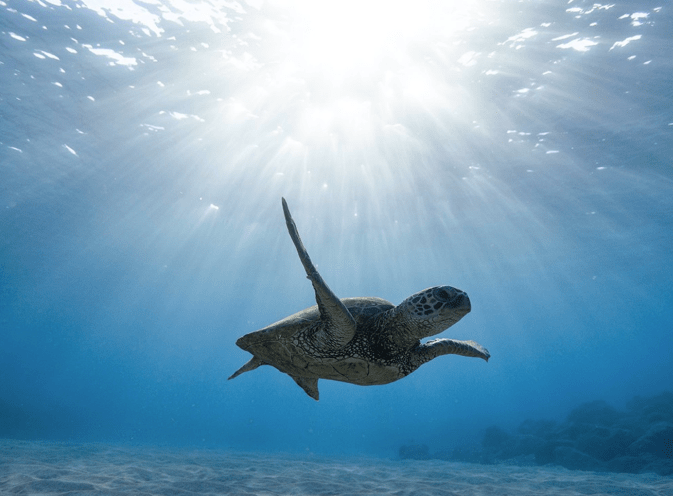
Galapagos by Tiny Cat
Swimming next to inquisitive sea lions, adorable penguins, graceful sea turtles, and a multitude of colorful schools of fish was worth taking four airplanes and numerous buses to reach the EcoGalaxy in the Galapagos Islands.
The 16-passenger, three-deck catamaran was built to fit ecological parameters for a different kind of cruising. To preserve the islands’ fragile ecosystem, the state-of-the-art technology aboard includes an optimal energy generator to help reduce carbon emissions. A water system on board treats greywater and reuses it to wash the boat. The vessel’s construction used 50 percent less wood than many ships of its size. There are energy-saving lamps, and the cleaning products and toiletries are biodegradable.
Low-Impact Luxury
We chose EcoGalaxy for a 6-day cruise because of its small size and action-packed itinerary. This ship takes passengers to areas providing some of the most incredible up-close wildlife viewing opportunities. On board, however, it’s luxurious, with spacious ensuite staterooms and three delicious, chef-curated theme meals a day. Wetsuits, fins, and snorkel masks are provided to guests to comfortably endure the chilly Pacific Ocean.
The staff constantly works on reducing the negative impact of tourism, while supporting the local population. The experienced crew and the ship’s naturalist attend training programs in conservation and wildlife etiquette held to enrich each passenger’s experience. Nothing is to be touched or taken off any island. When viewing wildlife, humans must maintain a 6-foot distance in water and on land.
Each day, we visited three different beaches and our naturalist took us on engaging nature walks and hikes. The ship’s two panga boats took us through mangrove forests and protected coves. Highlights of the cruise included visiting the non-profit The Charles Darwin Station. Founded in 1959, this international organization is dedicated to scientific research for the conservation of the environment and the biodiversity of the Galapagos archipelago. Working with the Galapagos National Park, they help to preserve and protect the native species and eradicate the invasive ones threatening the Galapagos environment.
One of the most important projects they work together on is reproducing giant tortoises. These beautiful creatures can live to 125 years old on the dry islands. Feeding on giant cactus and other native plants, the giant tortoises and land iguanas thrive and reproduce in captivity here.
Sites for Sightings
Throughout the cruise we saw green sea turtles, the most common sea turtle species in the Galapagos, pop their heads up for air. At Moreno Point, we walked on black lava rocks to a brackish lagoon to look for flamingos, gallinules, ducks, and herons.
Another favorite sighting was at Urbina Bay, just west of Isabela Island. In the 1950s, a large coral reef lifted up above the water, exposing previously submerged land. A sandy path, scattered with shells and coral, led us to orange- and yellow-skinnned land iguanas, Darwin finches, and curious mockingbirds. Enormous Galapagos land tortoises left trails with their tails. Flightless cormorants, blue-footed boobies, and penguins stood on rocks or…
By Jill Weinlein
EXCERPT ONLY. CLICK TO READ THE FULL ARTICLE.
This is an excerpt from the latest issue of Porthole Cruise and Travel Magazine. To continue reading, click above for a digital or print subscription.
JIll Weinlein
Jill Weinlein is a travel, dining and entertainment writer who has appeared in The Beverly Press and Park LaBrea Newspapers, Fodors, NBYnews, Just Luxe and Luxe Beat magazine. She resides in California.
You may also like

Help 4Ocean Make a Difference for World Oceans Day (VIDEO)
Forget Space, there’s a place here on Earth that contains miles of unexplored terrain and countles

Nod Pod Helps Cruisers and Travelers Get Better Sleep
One thing many cruisers and vacationers alike struggle with is getting a good night’s sleep. It ca
P&O Britannia Premieres Newest Show: Astonishing
I was kindly invited to the Celebrity Premiere of Stephen Mulhern and Jonathan Wilkes’ Astoni







